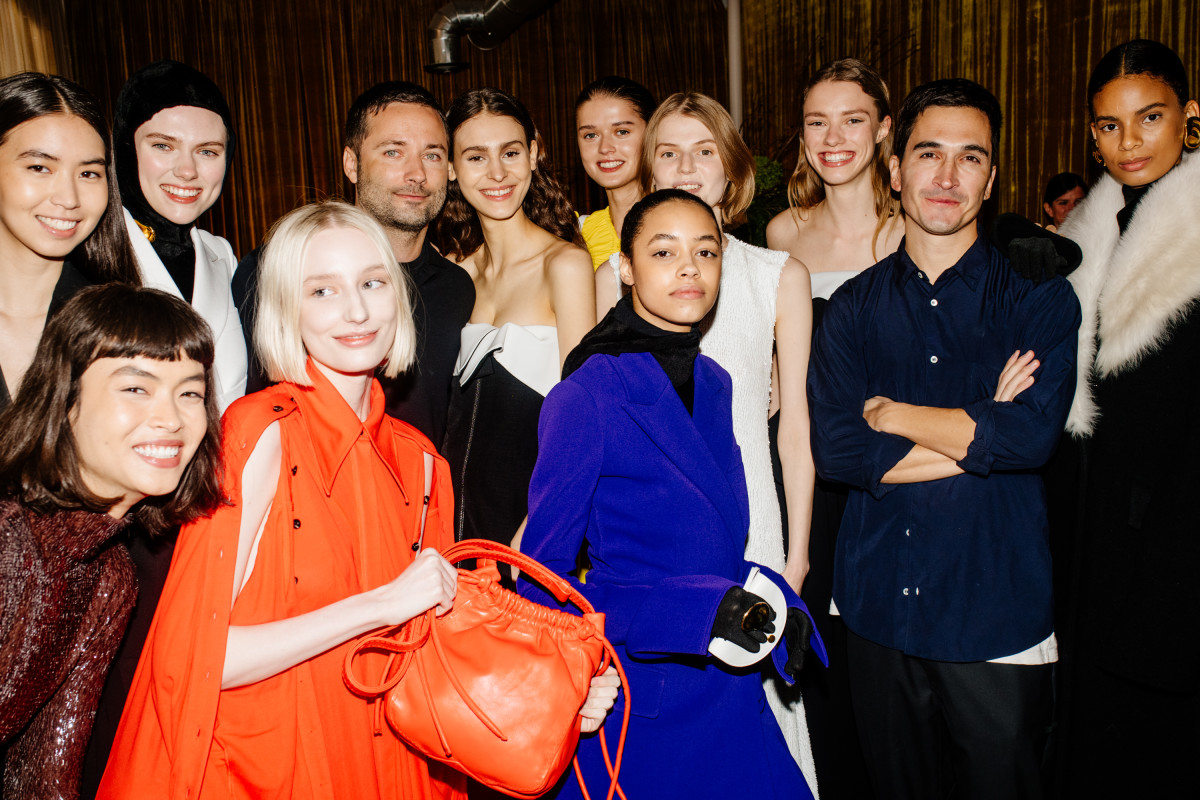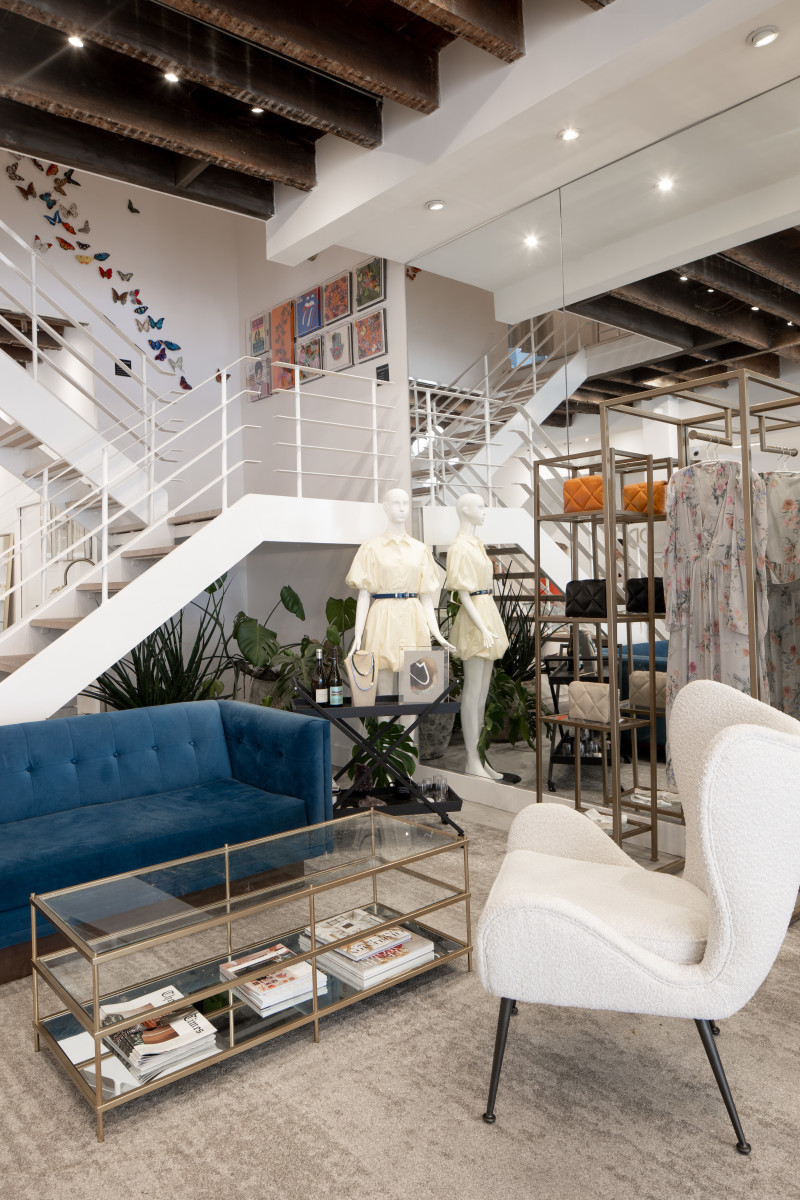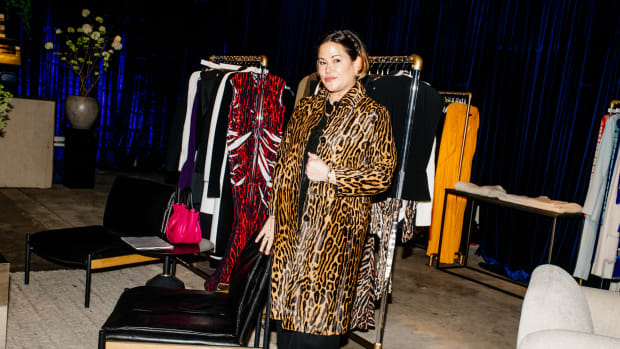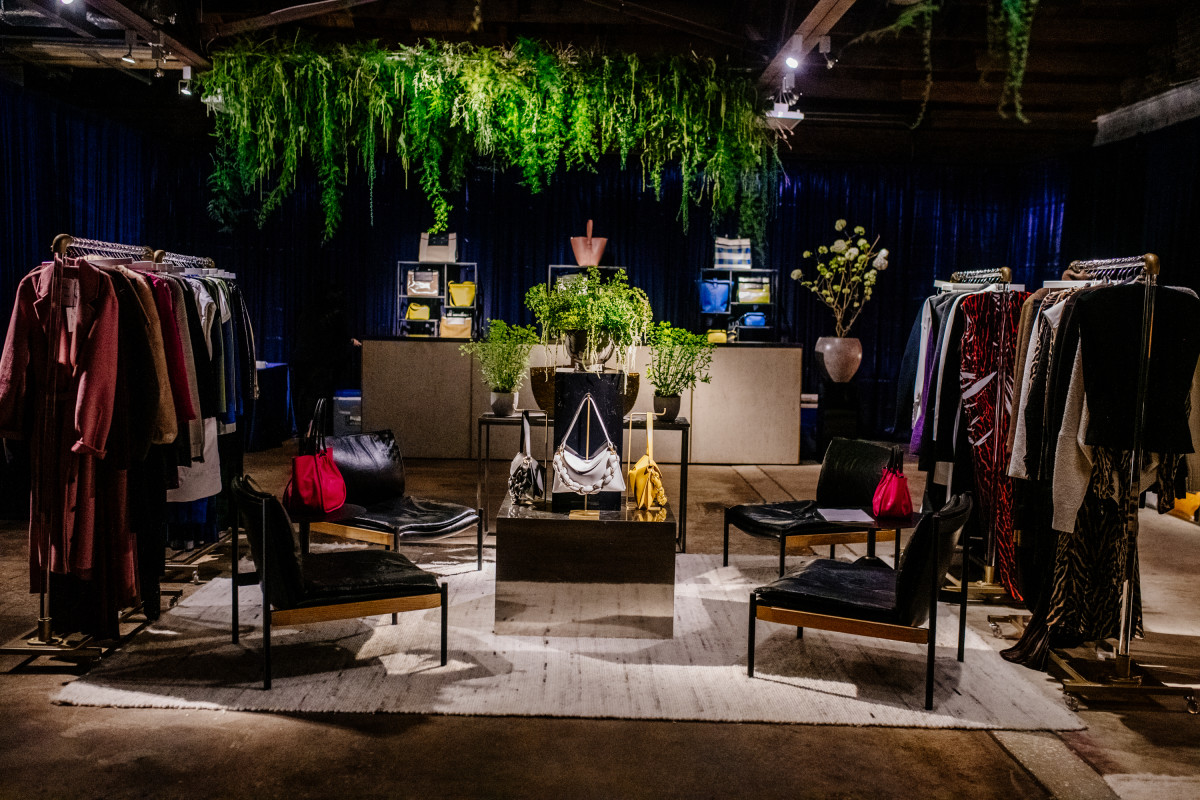The lights dim and guests take their seats — the Proenza Schouler show is about to start. We're not in New York City, or even at fashion week, but in Charleston,
South Carolina, and seated next to a smattering of the editors you might expect is a row of women dressed head-to-toe in the New York label. They're not celebrities, influencers or merchandisers, but actual shoppers, getting an up-and-close look at the brand's latest in large part thanks to Stacy Smallwood, the founder of Hampden Clothing, who gathered a group of clients and friends to celebrate the store's 15-year anniversary through a runway experience that many of her regulars have never had the chance to take part in before.
After two years of closures, mask mandates and disrupted shopping cycles that have hit small businesses particularly hard, local but impactful fashion boutiques like Hampden — that sell luxury fashion through a regional lens and bring a level of personalized attention to interested shoppers that would otherwise be relegated to purchasing online — are hitting a new stride.
"We can't avoid bad things happening in life. It's about how we approach it," says Smallwood. "If we sit in fear, we can't move forward. One of the biggest things that allowed us to grow in such a huge way after Covid is that we took action by staying in touch with our clients, because we do care about them as a person, first and foremost."

The models for Proenza Schouler's Charleston show with Hampden Clothing, with designers Jack McCollough and Lazaro Hernandez.
Photo: Hunter Abrams/Courtesy of Hampden Clothing
Prioritizing relationships with shoppers and key brand partners, plus taking a minute to streamline their designer roster and sharpen their retail perspective, has paid off for these luxury-focused shops spread throughout the country. For a number of them, a break in business served as an opportunity to reset and refocus.
"We have not stopped moving since [we opened] December 1st, 2017," says Coeli Hilferty Boron, co-founder of New Orleans-based Pilot and Powell. "It granted us a moment to just sit there and go through paperwork, get our office organized, get our back of house under control." Pilot and Powell has a lower overhead than, say, a larger department store, she explains — that and the direct connection with both buyers and customers helped buffer through any potential difficulties during the pandemic.
"Being a small retail machine I just feel makes us slightly more efficient," adds co-founder Kathryn Bullock Joyner. "We can react much faster, we can change course easily. It's Coeli and I making all of the decisions." Smallwood echoes this sentiment: "The best thing about working with a specialty store is that it's me making the decisions. A lot of times, if you're working with a department store, it's like turning the Titanic."
Part of that efficiency meant revisiting relationships with brands and tailoring purchases to clients' needs. Rather than going the route of selling only sweatpants mid-pandemic, though, these boutiques found ways to address their customers while retaining their identities.
"Fashion is about evolution, and we've got to keep evolving," Smallwood says. "We still picked up seventeen new brands that first season that we went back to buying."
For brands that had long held space on the floor at Hampden, Smallwood made sure to work collaboratively in order to build and strengthen partnerships. "I spent my time on phone calls with brands asking, 'How can I help you?,'" she says. "'It's not my mission to kill you to save me, because if we get through this together, we'll both be better.'"

Inside Charleston's Hampden Clothing.
Photo: Frannzi Annika Photography/Courtesy of Hampden Clothing
A direct line to customers has also proven to be a crucial element of success, with boutiques often going above and beyond the traditional retail role to cater to the specific desires of clients.
Recommended Articles
"It's offering people approval boxes. It's bringing things to the house, picking it up," says Bullock Joyner. "It's offering all the luxuries of having someone know and anticipating your needs, rather than [browsing] online or a department store."
For Telsha Anderson, founder of New York's t.a., opening up shop amid the pandemic emphasized the need to create a cohesive identity and engaged community that can exist both in person and online.
"We formed a community of intentional buyers," says Anderson. "Our digital presence and brick-and-mortar play off each other in color, theme and language, allowing our customers to stay connected if they're out of state or right down the corner."
Retail market trends predicted the rise of online shopping as a side-effect of the pandemic, but for these boutiques, beefing up their online presences didn’t necessarily translate directly to an increase in e-commerce sales. Even after strengthening Pilot and Powell's website during the pandemic, Hilferty Boron and Bullock Joyner experienced a somewhat amusing side effect: "Customers were utilizing it as a tool when it was a little precarious to go out in public, looking online to make sure that we had things that would even interest them before coming in," says Bullock Joyner. Some went as far as printing out images of what they saw online and brought them into the store, according to Hilferty Boron.
Smallwood saw something similar with her customers, who would use Hampden's site as a lookbook, from which they could send images to its stylists. "The website is such a big connector for conversations," she says. "Even if the transaction doesn't happen online, it allows the stylists to show their clients products and start a conversation about what we have and [which] new designers are arriving."
This connection forged through both digital and physical spaces has created a sense of intimacy that many high-end shoppers are seeking out in their shopping experience. Access to both traditional luxury brands and emerging labels with tailored advice that can be directly given via text, email or in person allows them to participate and be part of a larger community, one that's built around these brick-and-mortar spaces.
Guests at Hampden's Proenza Schouler show included a mix of local supporters and long-time fans of the store who flew in from across the country to support. These shoppers may have discovered Hampden on vacation or while visiting the area, but were ultimately attracted to both its sartorial angle and the customer-retailer relationship it offered. For these boutiques, it's more about building a long-term community than it is to make a one-time sale.
"Anytime a customer comes to t.a. for the first time, I hope they walk away with a sense of inspiration and a new level of discovery from designers within the fashion industry," Anderson says. Beyond her own website, developing a brand identity and community on social media has helped to spur growth as well: "A social community is huge when building a new platform. Content creators with engaging individual communities are drivers for both product and small businesses."
Through their unique one-on-one interaction with customers — whether it be in the changing room or through a simple DM — these boutiques can gauge aesthetically what their clients might want in a way that larger retailers cannot. As such, when going out in the market, smaller stores can experiment more heavily with their buying choices.
"It's knowing [our customers], knowing their closets, and anticipating their wants and needs," says Bullock Joyner. "We're always on the hunt for emerging designers, but we're also going to take the risk of picking the more esoteric piece. We're not gonna go as safe as a department store because it's much more saleable. We can buy just one with that one person in mind."
It's that community draw — knowing who's getting married, who's engaged or who’s just looking for something a bit out of the box — that keeps shoppers coming back to these stores. And as these consumers increasingly expect an experiential element to their purchasing experience, it's those thoughtful details that have made all the difference.
Disclosure: Hampden paid for my travel and accommodations to attend the Hampden Clothing x Proenza Schouler show in Charleston, South Carolina.





